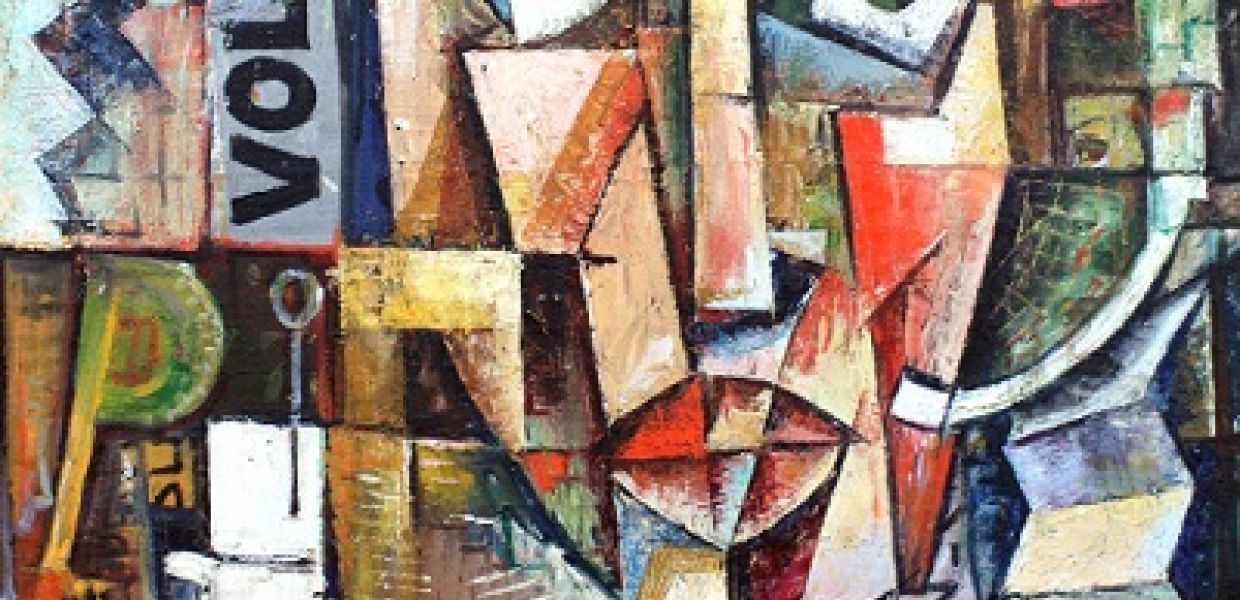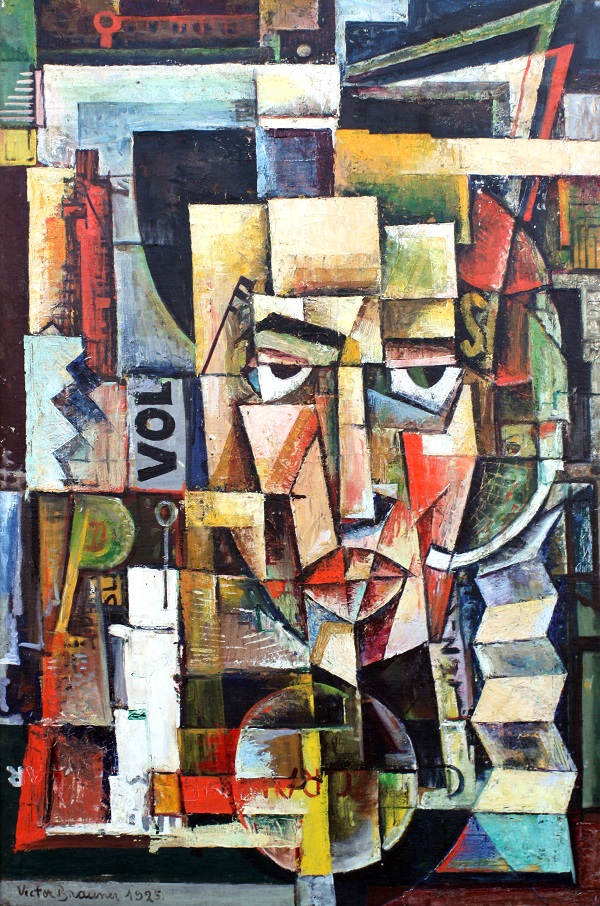Choosing a country's artworks for Europeana 280: Romania

Continuing our series exploring each country's nominations for Europeana 280, Ann Maher, Europeana 280's Exhibition Coordinator, highlights nominations from Romania.
The Ministry of Culture, in cooperation with the National Heritage Institute and the Art History Institute, conducted the Romanian selection process for Europeana 280. Seven of the most important art museums in the country are represented with works ranging from the 15th to 20th centuries.
 Portrait of the poet Ilarie Voronca (1925), Victor Brauner, Muzeul de Artă Vizuală Galați, CC0
Portrait of the poet Ilarie Voronca (1925), Victor Brauner, Muzeul de Artă Vizuală Galați, CC0
Landscape traditions
Nicolae Grigorescu is considered one of the founders of modern painting in Romania and was attracting international attention in the second half of the 19th century. According to The National Museum of Art of Romania, their selection Girls Spinning at the Gate (1870), “captures the intimate relation between man and nature, the elegant simplicity of the folk costume while focusing on the landscape.” Grigorescu studied in Paris and was also part of the Barbizon school. For over forty years, from about 1830, artists flocked to the modest village to the southeast of Paris and took their easels out into the countryside, painting the landscape, and as ever, their fellow painters. In 1877, Grigorescu was a frontline artist in the Romanian War of Independence (with Russia, against the Ottoman Empire).
Grigorescu was a mentor to another key figure in Romanian art heritage, also known for his landscapes and still lifes. Ștefan Luchian studied in the Munich Fine Arts Academy, but left for Paris and the Académie Julian after a year. In 1900 he contributed to Romania’s pavilion at the Exposition Universelle but also experienced the first symptoms of multiple sclerosis (he died aged 48). Willows at Chiajna (1905), nominated by The Cluj-Napoca Art Museum, ‘belongs to a group of oil paintings during the artist’s full maturity period’ according to the museum. “The most brilliant colours are put together in a daring flame; the thick paint incorporates and prodigiously gives back the brilliance of the light.”
Cultural heyday
Romanian artists were founder members or central protagonists of many important artistic European movements such as Dadaism and Surrealism. Bucharest also experienced a flourishing of the arts in the period between the First and Second World wars.
Marcel Iancu (or Janco) was one of the leading Romanian intellectuals of his generation working as a painter, graphic artist, writer and architect. He was a leading exponent in Dada and constructivist circles in Zurich, returning to Bucharest in 1922 where among other activities, he edited Romania’s leading avant garde magazine Contimporanul. Portret de fată (1930), the nomination from the Constanța Art Museum, reflects his artistic directions and ‘could be considered cubist and constructivist’. Facing Jewish persecution, Ianco emigrated to British Palestine in 1941, together with his second wife Medi and his two daughters.
Artist and writer Victor Brauner became a leading figure in the surrealist movement but progressed through many different avant-garde styles. The Brauner selection from The Visual Arts Museum Galaţi is a portrait of the poet Ilarie Voronca (pen name Eduard Marcus), with whom he founded the Bucharest Dadadist review 75HP. In Portret of the poet Ilarie Voronca 1925, strong colour contrasts are in harmony with geometric forces. Brauner was also a contributor to the periodical unu. Voronca, who became a French citizen in 1938, was a member of the French Resistance but committed suicide in 1946. Brauner, also based in France for much of his life, died in Paris 1966.
Post-war work
For Romanian artists in the country when it was under communist rule from 1948 until 1989, there were pressures to conform to the official Socialist realism view of art, but as ever, artists who continued to forge their own creative path.
A selection from The Timisoara Art Museum Somnul The Sleep (1959) is the work of Corneliu Baba. Citing El Greco, Rembrandt and Goya as particularly strong influences, Baba exhibited widely at home and abroad, winning many awards, and was a significant figure in artistic education. The museum holds an extensive selection of his work including portraits of key cultural figures such as the musician George Enescu. According to the museum their selection depicts two peasants asleep: “ The rest is a dignified fall and the sleep is a surrender to the elemental world.“
About the whole selection experience, Codruta Cruceanu from the National Museum of Art of Romania said: “The country-wide call for nominations challenged curators to think about Romanian masterpieces from new angles. One concerned contemporary European audiences, the other the idea of national visual identity as a reflection of shifting historical, social, cultural paradigms. The sheer difference between the post-Byzantine visual legacy of the Last Judgement by Toma de la Suceava or of Lady Roxanda’s portrait by Dobromir, the French open-air and impressionistic echoes in Grigorescu’s Girls Spinning at the Gate and the highly idiomatic avant-garde promoted by artists such as Mattis-Teutsch, Brauner or Janco, all active in Romania in the inter-war period, highlights the country’s capacity to reinvent itself and the visual expression of its open cultural identity.”
We hope you're enjoying the magnificent art selected for the Europeana 280 campaign via Europeana Art History Collection, our virtual exhibition or at one of our public digital events.
And follow the conversation on Twitter via #Europeana280
